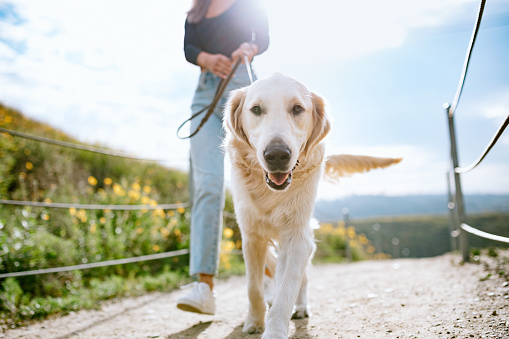What Your Dog’s Poop Says About Their Health
Stopping to look at your dog’s bowel movements on your morning walk isn’t the most glamorous part of dog ownership, but start paying attention because you could be missing important clues about what’s going on inside your pup’s body.

What You Want To See…
Shape
Healthy poop should maintain its form and be log-shaped when dispelled. If the poop is so runny that you’re struggling to scoop it up, your pup’s tummy is probably just as unhappy as you are at that moment.
Color
In general, dog stool should be chocolate brown. Color is a key indicator of your dog’s digestive health, so if all of the waste is green, something may be amiss. Flecks of color, on the other hand, such as bits and pieces of carrot, are perfectly normal— if not to be expected.
Volume
The volume and size of your dog’s stools will vary depending on fiber intake and food choice. An added bonus to feeding natural, filler-free food and treats is that you will notice a decrease in both the volume and size of your pup’s poop because more of the food is being absorbed and used by the body. The healthier the food and snacks, the better nutrient absorption inside your pup’s digestive system, the less waste product needed to be expelled.
Pay close attention to your dog’s typical bathroom routine— any sudden increases or decreases in frequency could be a reflection of a digestive issue or allergic reaction. Keep in mind that what is considered a normal frequency is decided dog per dog. So while most dogs go once or twice a day, others may go up to four times daily. As long as color and consistency are normal, this is totally healthy.
Potential Signs Of Trouble…
Color
Black stools are very important warning sign— to be taken seriously. While the stool may be black because of something the dog has eaten, black stools often warn of bleeding in the stomach or frontal intestines because blood turns black after being digested. If you see red in the stool, it is often blood from lower in the tract, indicating potential strain or anal fissures. The presence of both black and red mean it’s time to see the vet.
Consistency
If your dog’s poop is spherical, pellet-shaped, or abnormally hard, it may be an indication that your dog is dehydrated. Dehydration is especially common during summer months. Conversely, diarrhea or loose stools can reflect an intestinal upset or iteration. And the presence of mucus can indicate an inflamed colon. If your dog’s stool looks larger than, in disproportionate volume to the amount of food he or she typically consumes, this could be a sign that a large portion of meals are not being absorbed properly.
Texture
When partnered with paw licking, finding fur in stools could be a sign of allergies— a result of constant worrying at itchy spots and other allergic reactions. The appearance of white flecks in the poop could mean that your dog has worms and needs to see the vet immediately. It is critical to note that worms are highly contagious and should be treated as soon as possible— and carefully kept from any other pets in the home until fully treated.
How You Can Make A Difference…
Smart Choices
Try to make smart choices when it comes to your dog’s food and snacks. Choose fresh, organic, and natural options without fillers and staying consistent with a diet plan and occasional treating is the best strategy for maintaining healthy, regular bowel movements. Consistent bathroom trips are a reliable predictor for the overall health of your dog; your small choices go a long way.
As a rule of thumb, signs of healthy digestion (and a healthy pup) are stools that are firm, easy to scoop up, and a chocolate brown color. If you have any concerns, it is always best to take your dog to the vet to have them perform a stool test. As with most health issues, the majority can be best treated when identified early, so it’s better to be safe than sorry… especially with our best friends.
Looking for weekly insights and tips to keep your best friend happy & healthy?
Look no further and sign up for our newsletter right away:


